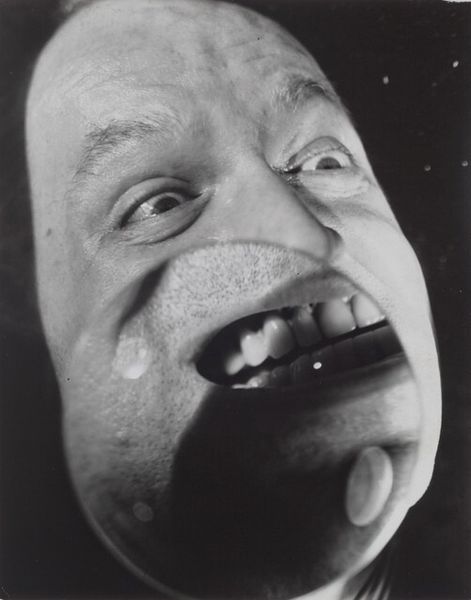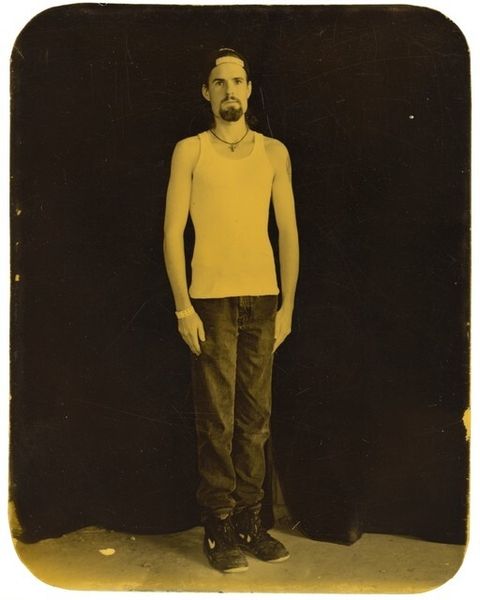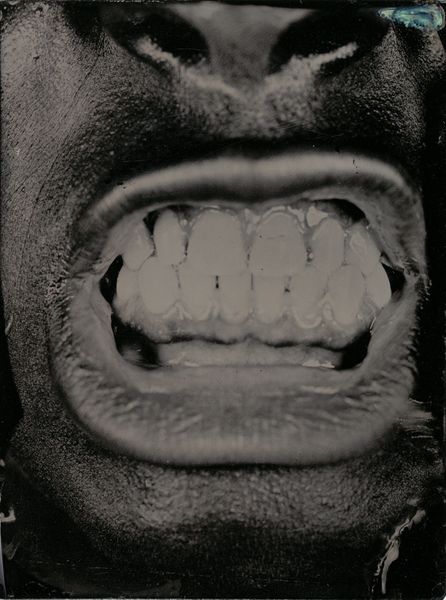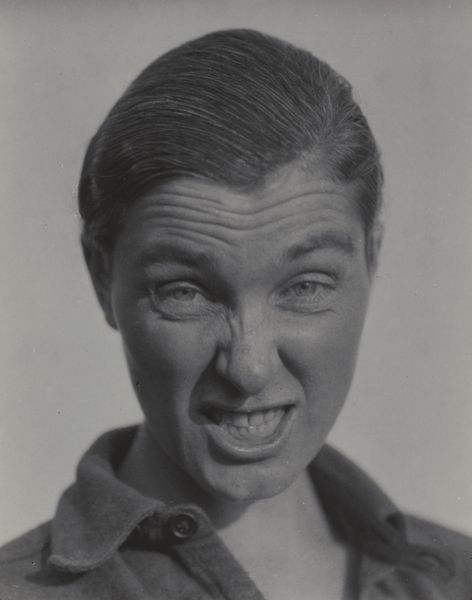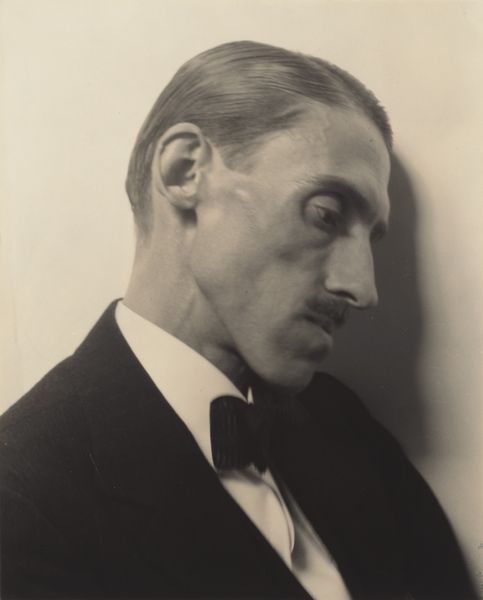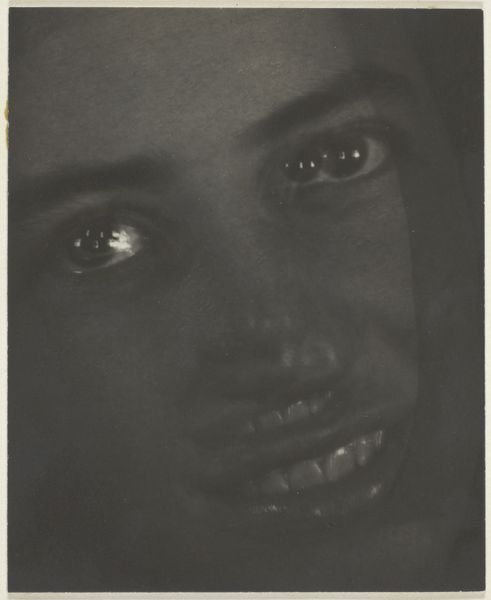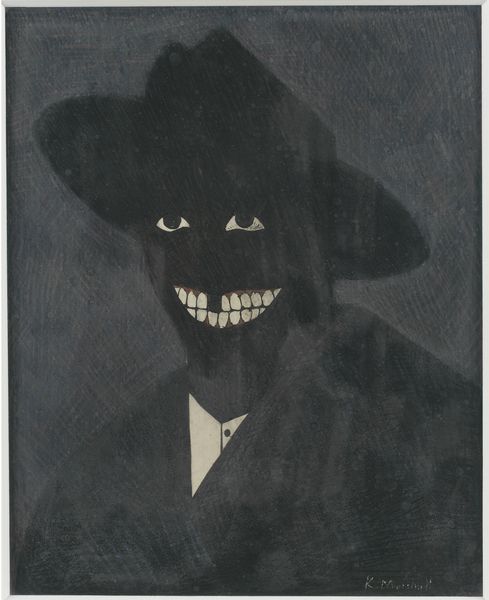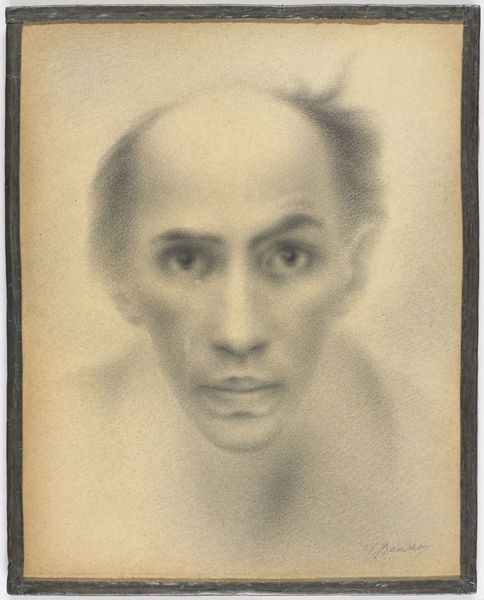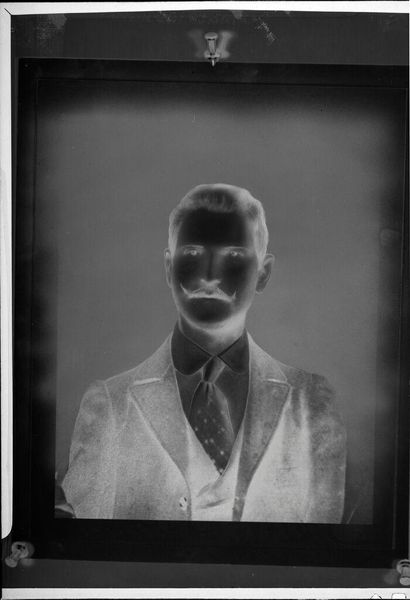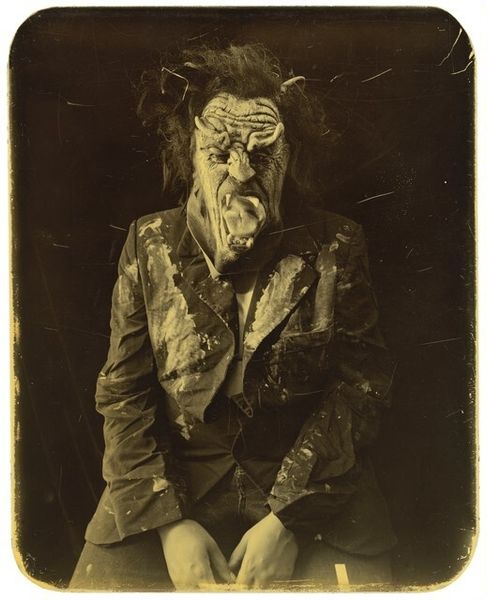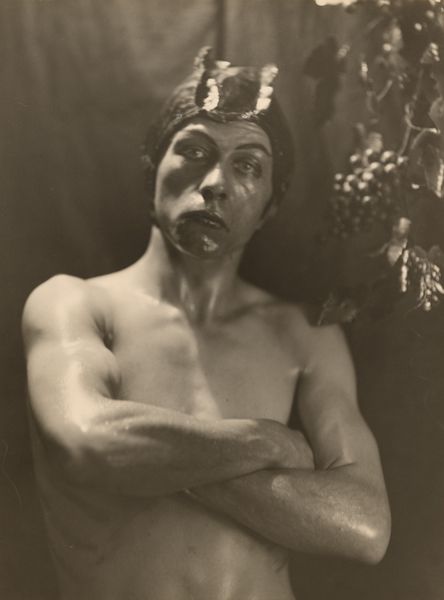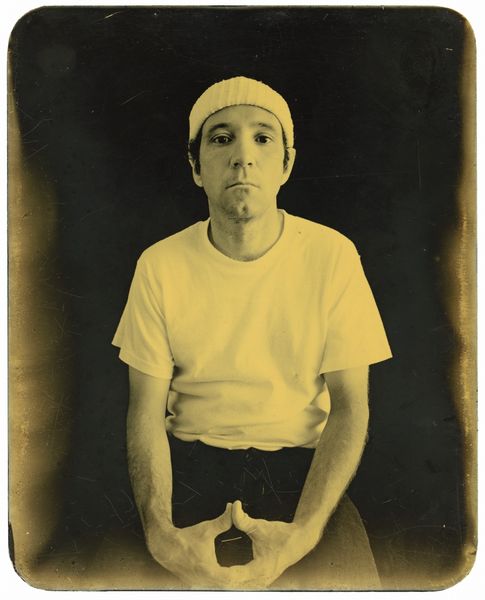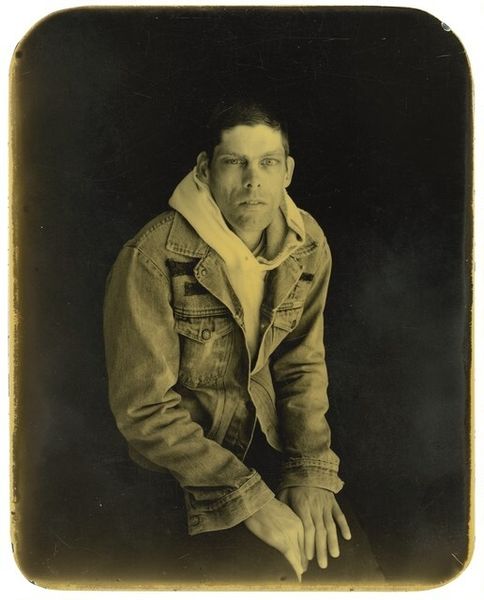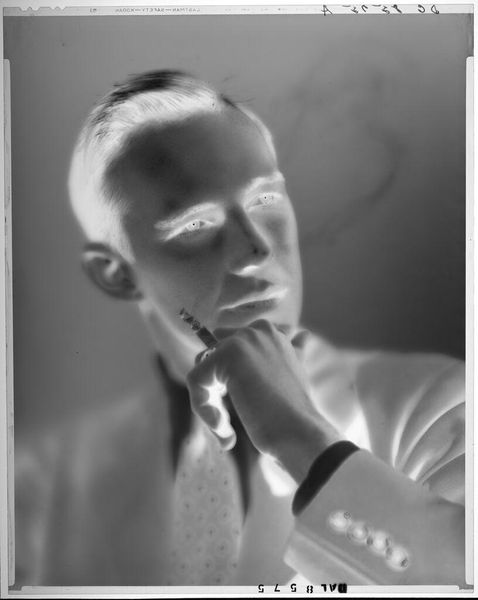
photography, gelatin-silver-print
#
portrait
#
portrait
#
photography
#
gelatin-silver-print
#
portrait photography
#
realism
Dimensions: image/plate: 12.7 × 10.16 cm (5 × 4 in.)
Copyright: National Gallery of Art: CC0 1.0
Curator: Deborah Luster’s photograph, "John 'K Dog' Edwards, Angola, Louisiana," made between 1998 and 1999 using the gelatin silver print method, certainly captures the gaze. What strikes you first? Editor: There’s an immediate rawness, a kind of vulnerability juxtaposed with a defiant glimmer in his eyes. The tones evoke old daguerreotypes, but the subject feels intensely present. The intimacy is unnerving. Curator: Luster worked extensively with the inmates of Angola prison, exploring issues of incarceration, identity, and memory through tintypes and portraits. Her use of historical processes speaks to photography’s role in archiving and documenting marginalized communities. Think of the prison labor that extracted and processed the silver used to create these prints. Editor: I see what you mean about archiving a marginalized population, but beyond that, I notice how his finger presses against his bottom teeth as if trying to suppress emotion. Compositionally, it draws you in. Curator: Absolutely. The use of an outdated process is not simply aesthetic. Luster purposefully utilizes methods that evoke Victorian portraiture – commonly employed to memorialize loved ones, here employed to humanize incarcerated men largely abandoned and forgotten. These are commodities for a viewing public, and they often circulate around our own cultural appetite for misery. Editor: But I’m more drawn to his eyes, which suggest this person possesses intelligence and complex emotions, as you hinted, but his posture is the focus; it demands reflection on human value, even in such a difficult environment, and the gold tint contributes an aura that reminds you of royalty or reverence. Curator: Consider, though, what happens when we strip away the individual, reducing someone solely to their incarcerated status. Luster’s work challenges this by presenting these men as individuals worthy of contemplation. Editor: Indeed, seeing past labels and into the subject’s essence—that's what lingers most. Curator: Yes, these images offer more than documentation; they propose an ethics of seeing.
Comments
No comments
Be the first to comment and join the conversation on the ultimate creative platform.
